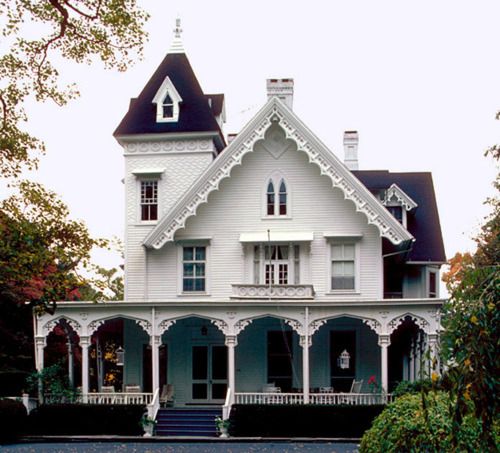#3165. Snow-white Victorian Mansion: Gothic Facade with Intricate Carvings and Spacious Veranda
The image showcases a splendid example of Victorian Gothic architecture, also known as Gothic Revival. This pristine white mansion displays the characteristic features of this style, which became popular in mid-to-late 19th century North America.
The building's facade features an asymmetrical composition with a striking vertical dominant in the form of a tower with a pointed roof and a dormer window. The roofs have steep slopes, typical of the Gothic style. Particular attention is drawn to the richly decorated gable with intricate carved trim along the cornice, creating a "gingerbread house" effect—an element commonly found in late Victorian architecture.
The first floor is adorned with a spacious veranda featuring characteristic decorative elements: carved columns, ornate brackets, and a balustrade. This porch wraps around a significant portion of the facade, creating a smooth transition between the architecture and the surrounding landscape. The building's windows have elongated proportions with arched tops on the second floor, which is also a reference to Gothic motifs.
The color scheme of the facade is built on the contrast between white walls and dark roofing, which enhances the expressiveness of the architectural composition and emphasizes the decorative elements. This country mansion represents a magnificent example of "Carpenter Gothic"—a style in which traditional Gothic elements were adapted for wooden construction in America.
